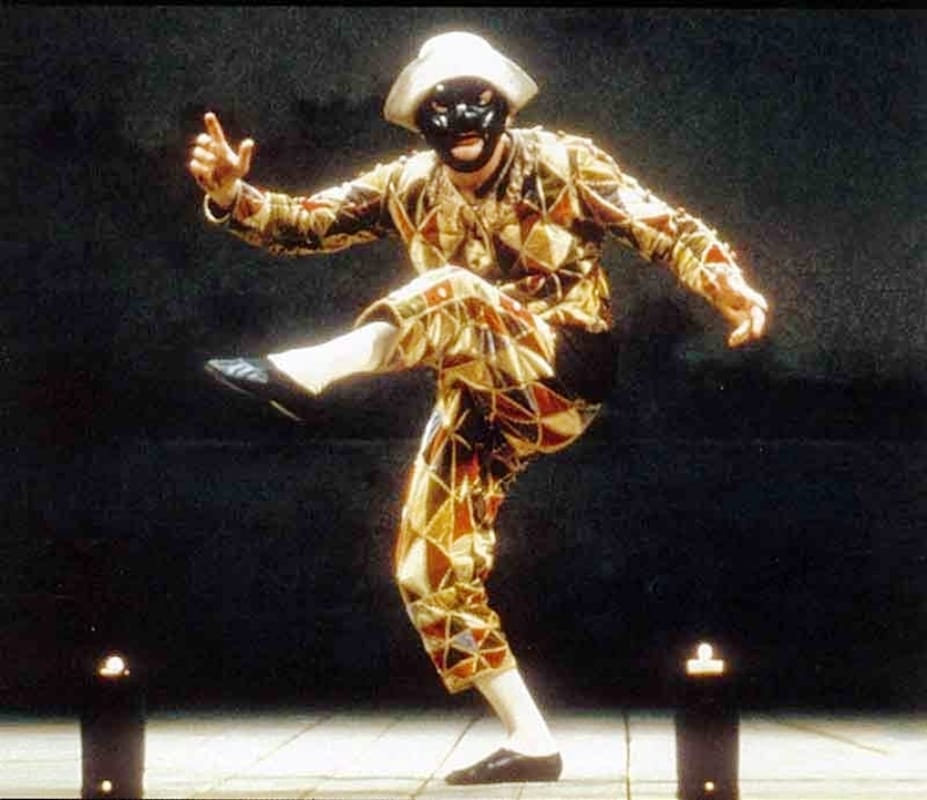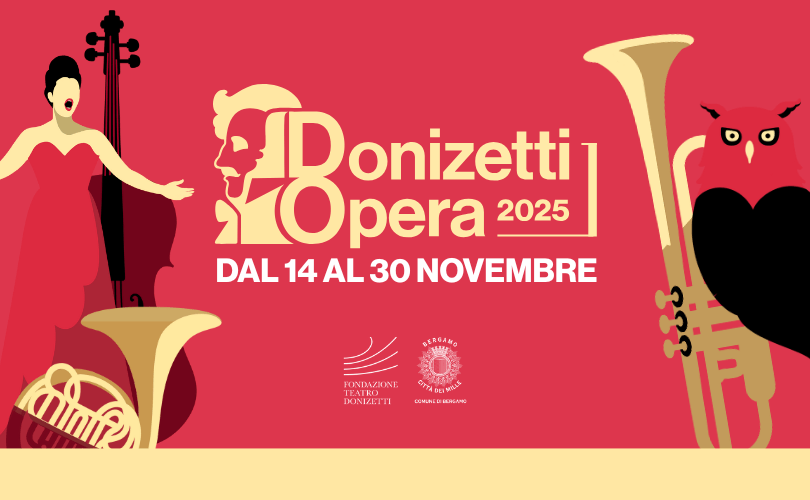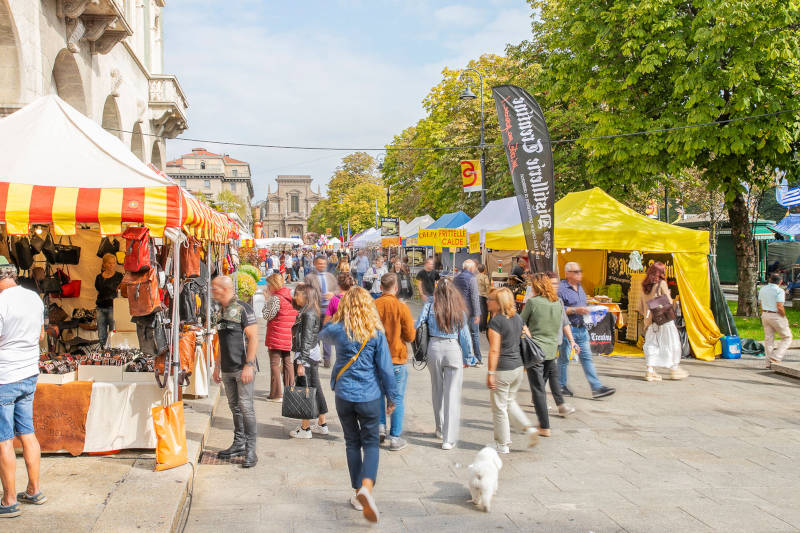Arlecchino, one of the most famous and enduring characters in Italian theater, has its origins in Bergamo, specifically the rural valleys that surround the city. This character, born out of the Zanni tradition, rose to fame through the Commedia dell’Arte in Venice, becoming a symbol of wit, mischief, and comic brilliance.
Historical Origins: From Zanni to Arlecchino
The figure of Arlecchino originated from the Zanni, a stock character in early Italian theater representing a rural peasant or servant. The Zanni character, with its roots in the poor, often naive peasants from the valleys of Bergamo, was a caricature of the common folk who migrated to cities in search of work. The Zanni were often simple, but sly, and their behavior on stage mirrored their rustic, valley origins. Arlecchino, however, evolved into something far more complex and playful than the traditional Zanni figure.
In Dario Fo’s “Mistero Buffo,” the Nobel laureate highlights the historical significance of these Zanni characters, noting that they were a voice for the oppressed, their comic actions both entertaining and subtly subversive. Arlecchino, as the archetypal Zanni, became a clever, quick-witted servant who used humor, trickery, and acrobatics to outsmart his masters and navigate a world of social inequality. His jester-like antics and ability to mock the powerful reflected the struggles of the lower classes in medieval and Renaissance Italy.
Arlecchino and the Commedia dell’Arte
The Commedia dell’Arte, a form of improvisational theater that developed in Italy in the 16th century, provided the perfect platform for Arlecchino to flourish. Venice, a bustling city with a rich cultural life, embraced this new theatrical form, and Arlecchino quickly became one of the most popular characters in its repertoire.
Arlecchino was the servant, typically portrayed as cunning but dim-witted, cheerful, and always ready for a practical joke. His costume, which evolved over time, featured a patchwork of brightly colored diamond shapes, which became iconic. This represented his lower origins, his poverty initially leading to wearing patched-up clothing, though the costume became more elaborate with time.
In the Commedia dell’Arte, Arlecchino was often paired with another Zanni character, Brighella, who was usually his opposite in personality—more calculating and less jovial. Arlecchino’s antics often centered around attempts to satisfy his immediate needs—typically hunger—while his foolishness and love of mischief frequently got him into trouble. His character also had a romantic angle, often pining after Colombina, another servant character, adding a playful dynamic to the comedic interactions on stage.
Theatrical Features of Arlecchino
Arlecchino’s character in the Commedia dell’Arte is instantly recognizable by his distinct costume, mask, and physicality. His half-mask covers the upper part of his face—typically black or brown in color, with a red dot to remind its devilish origins—with a playful, exaggerated expression. The mask accentuates his mischievous personality, allowing actors to enhance his playful and foolish qualities.
Physically, Arlecchino is known for his acrobatic movements. Actors portraying Arlecchino use exaggerated gestures, flips, jumps, and other physical feats to entertain the audience, transforming the stage into a playground of comedy. His body language is a key component of the humor he generates, often more so than his words. His interactions with other characters are marked by his quick reflexes and the ability to dodge trouble—both metaphorically and literally.
Arlecchino’s speech, like his movements, is fast-paced and light-hearted, filled with puns, witty retorts, and wordplay. His role is that of a trickster, using cleverness to deceive those who attempt to control him, particularly his masters. Yet, there is an endearing quality to Arlecchino; he may be a fool, but he is also a hero of sorts, representing the everyman who triumphs over adversity using nothing but his wit and charm.
The Museo Casa di Arlecchino in Oneta
For those seeking to explore the origins of this iconic character, the Museo Casa di Arlecchino in Oneta is a must-visit. The museum is located in a traditional house in the Brembana Valley, believed to be linked to the origins of the character. This rural setting gives visitors a sense of the environment from which the Zanni and, later, Arlecchino, emerged.
The museum contains exhibits that highlight the evolution of the character, from the humble Zanni of the Bergamasque valleys to the beloved figure of Arlecchino in the Commedia dell’Arte. Visitors can view costumes, masks, and other theatrical objects, offering a fascinating glimpse into the world of Italian theater and the legacy of Arlecchino.
Teatro Tascabile di Bergamo
While Arlecchino’s story began centuries ago, its theatrical essence lives on today, particularly in Bergamo thanks to the Teatro Tascabile di Bergamo. Founded in the 1970s, this avant-garde theater company is based in the Monastero del Carmine in Città Alta and is deeply rooted in physical theater traditions—including the Commedia dell’Arte. The company has earned international acclaim for its open-air performances and expressive style, blending classical techniques with modern experimentation.
Teatro Tascabile often incorporates masked acting, stylized movement, and improvisational elements reminiscent of Arlecchino’s legacy. Their outdoor shows transform city streets, cloisters, and piazzas into vibrant stages, echoing the itinerant performances of the past. In doing so, they not only preserve the techniques of traditional Italian comedy but also revitalize them, offering a contemporary homage to characters like Arlecchino. Their work is a must-see for anyone curious about how Bergamo continues to nurture and celebrate its theatrical roots.
Arlecchino’s Enduring Legacy
Arlecchino’s influence has extended far beyond the Commedia dell’Arte and Italian theater. Over the centuries, he has become a symbol of comic theater worldwide, inspiring countless adaptations and interpretations. His mischievous nature and lovable personality have transcended borders, making him a timeless figure in global theater.
Despite his humble beginnings in the valleys of Bergamo, Arlecchino rose to become one of the most celebrated characters in European theater. His journey from the Zanni of the Brembana Valley to the grand stages of Venice embodies the spirit of the Italian Renaissance, where wit, creativity, and performance art came together to entertain, educate, and inspire.





